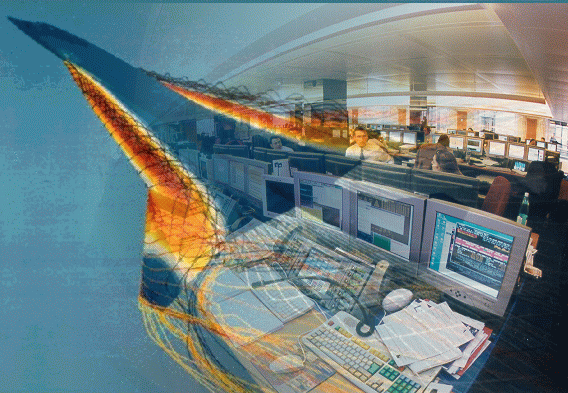|
MACS 1 - Numerical Analysis Professors : François Cuvelier, Marion Darbas, Caroline Japhet |
 |
Manyphysical phenomena can be formulated as differential equations, for example the airflow around an aircraft, the evolution of a glacier or the temperature in your room. Most of these equations however can not be solved exactly by analytical tools. Their solution has to be approximated using numerical methods. In particular, numerical integration and interpolation, as well as solving linear systems and non-linear systems are usually part of this process. The goal of this course is to study different methods for solving
and to write the corresponding algorithms before their implementation in Matlab/Octave or C. After the course you will be able, from a given problem and method, to recover theoretical results (convergence, consistency, ...) studied in class, and to write the corresponding algorithm to recover the theoretical results (consistency, stability,...) studied in class, compare differentnumerical methods and choose the "best one" to get an accurate solution, close to the physics with a minimum computational time andstorage.(decomposed in a sequence of simple modules that can be written independently, and then brought together to solve the original problem).
- non-linear systems
- linear systems and preconditioning
- interpolation
- numerical integration
Handouts
TDs
- TD 1 (Algorithmique), Corrigé
- TD 2 & 3 (Algèbre linéaire), Corrigé
- TD 4 & 5 (Equations non linéaires), Corrigé
TD/TP et algorithmes corrigés : voir le site où a lieu le cours
Introduction to Numerical Analysis
- A. Quarteroni, R. Sacco, and F. Saleri, Méthodes numériques, Springer, 2007
- A. Quarteroni, F. Saleri, and P. Gervasio, Calcul scientifique, 2ème édition, Springer, 2010
- Philippe G. CIARLET, Introduction à
l'Analyse Numérique Matricielle et à l'Optimisation, Dunod.
- P. Lascaux & R. Théodor, Analyse numérique matricielle appliquée à l'art de l'ingénieur, Masson